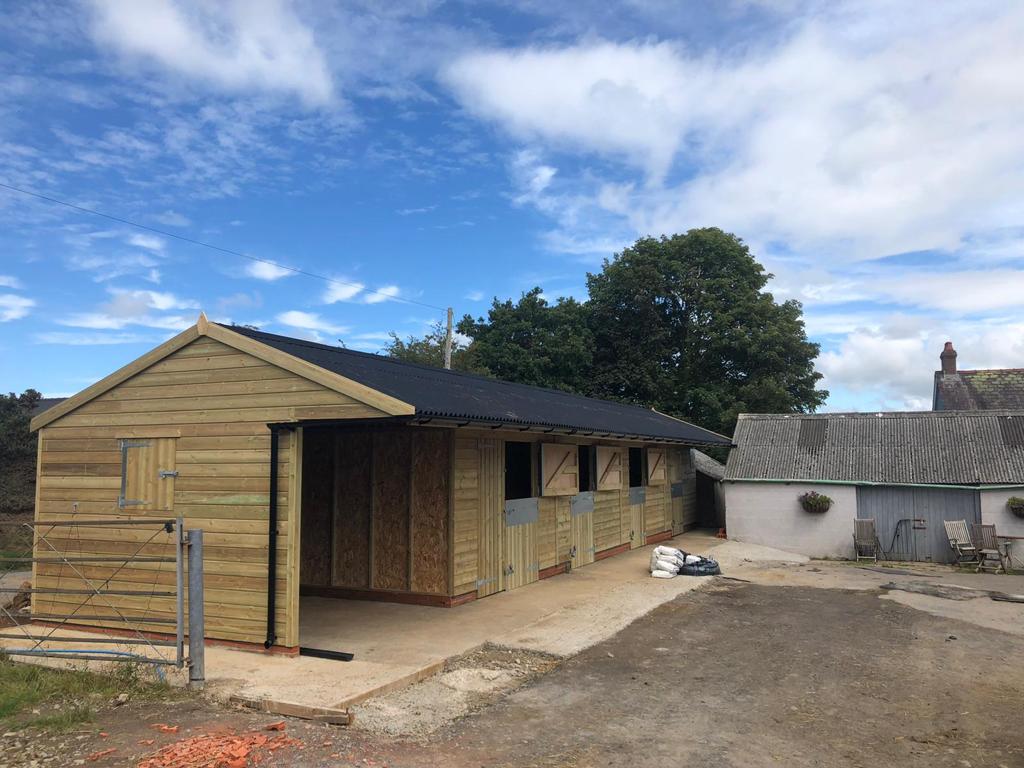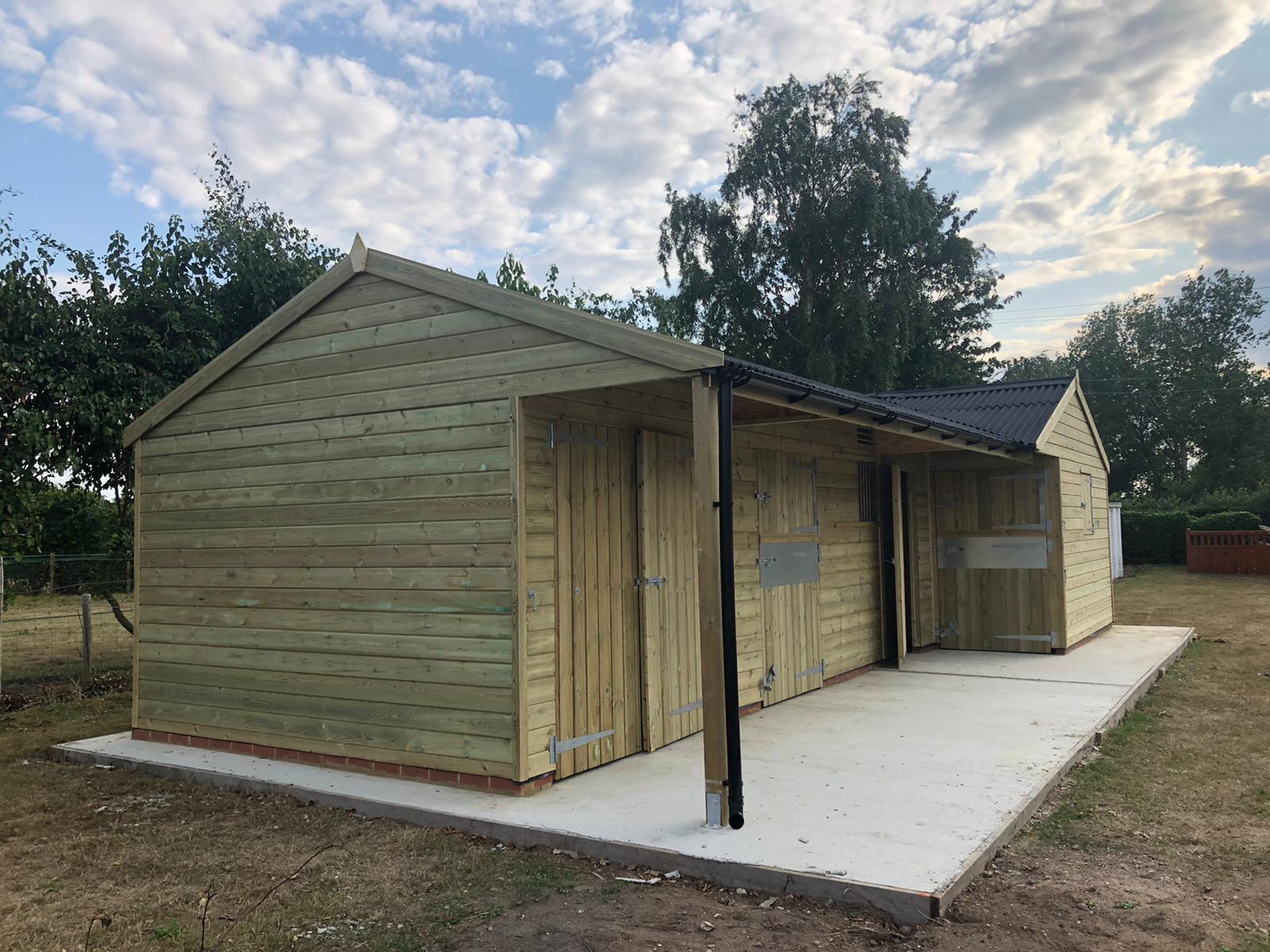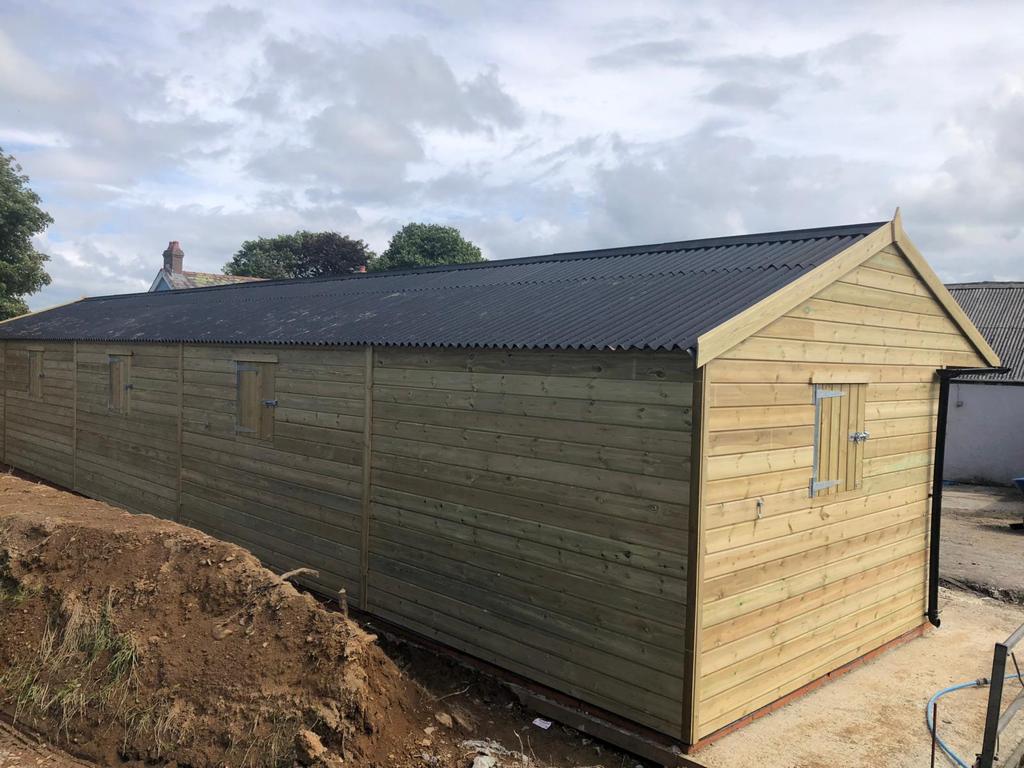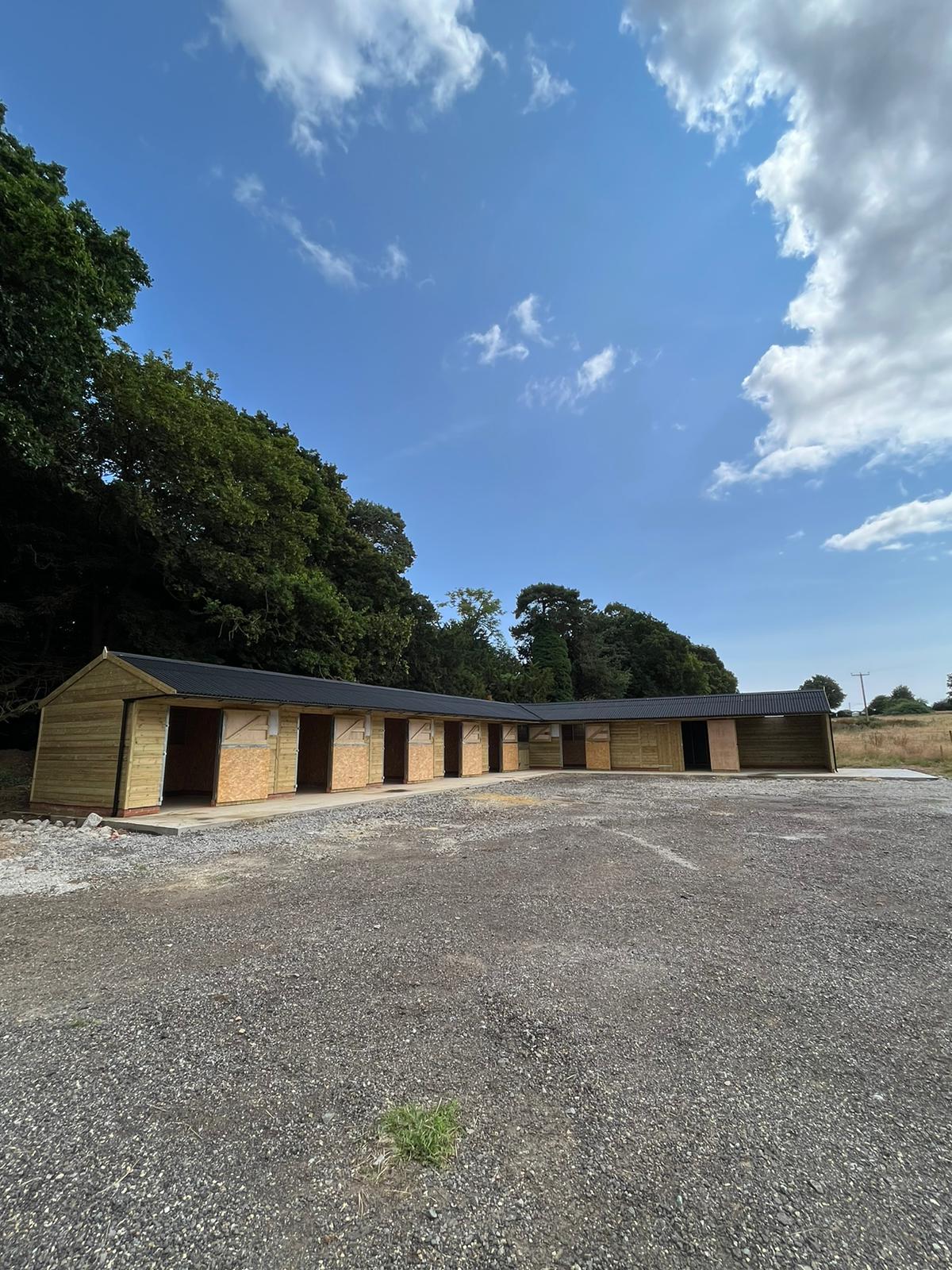A guide to expanding and enhancing existing stable blocks
THE TEAM AT NATIONAL TIMBER BUILDINGS CAN EXPAND AND ADD FEATURES TO YOUR EXISTING STABLE BLOCK OR OTHER OUTBUILDING
As horse owners, we know that from time to time you may need to tweak your stable setups as things evolve – maybe you’ve got more horses now or the horses enjoy different activities. Safety and compliance are important considerations too.
As horse operations expand, owners may need to add stalls or amenities to their existing stable block overtime. Upgrading aging infrastructure, enhancing functionality with features like wash bays, and adapting to environmental factors are common reasons for modifications. The integration of technological advances and a desire to improve the overall aesthetics of the stable also play roles. Ultimately, these changes reflect a commitment to the well-being of the horses and the continual improvement of the facility.
Whether you have looked at our website and wished that you had added additional features in your stable when it was first constructed, or you have inherited a perfectly serviceable stable block when moving house, but would love a few extras, the team at National Timber Buildings can help you achieve this.
We can improve your wood horse stables with things like inserting windows and doors, and replacing kickboards with solid timber, tanalised kickboards. We can also add additional buildings or spaces onto the side of stables and barns – maybe you need wash down areas, additional tack rooms, or a new community space.
Why would horse owners add features, or expand their stable block after construction
Horse owners may want to make changes, expand, or add
features to their stable block after construction for various reasons, often driven by a combination of
practical, safety, and aesthetic considerations. Here are some common reasons why horse owners may seek to
modify or enhance their stable facilities:
- Evolution of needs – the needs of the horse owner and the horses themselves may evolve over time. Changes in the number of horses, their health conditions, or the type of activities (e.g., training, breeding) may necessitate adjustments to the stable facilities.
- Improving safety and comfort – owners may identify areas where safety improvements can be made, such as better lighting. Enhancing the overall safety and comfort of the horses is a top priority for responsible horse care.
- Compliance with regulations – changes in local building codes or regulations may prompt horse owners to modify their stable to ensure compliance.
- Improving aesthetics and appeal – owners may wish to enhance the visual appeal of the stable for personal satisfaction or to create a more welcoming environment for visitors, clients, or boarders.
- Expanding the facility – as a horse owner’s operation grows, there may be a need to expand the stable to accommodate more horses or provide additional amenities. This could include adding more stalls, grooming areas, or storage facilities. It may also mean creating or upgrading tack rooms for storage of saddles, bridles, and other equipment, as well as installing wash bays with proper drainage for grooming and cleaning horses. These additions can improve efficiency and make daily horse care tasks more convenient. Some horse owners want to add common areas to their stable block set up to create comfortable and inviting common areas for owners, riders, and visitors.
- Upgrading infrastructure – ageing infrastructure or wear and tear over time may prompt owners to upgrade or replace certain components of the stable, such as roofing, flooring, or drainage systems.
Do I need planning permission to make additions or changes to an existing stable block?
In the UK, the need for planning permission for additions/improvements to an existing stable block will depend on various factors, including the nature and scale of the proposed changes, as well as local planning regulations. Here are some general guidelines:
Permitted Development rights. Some minor changes and extensions to existing buildings may fall under permitted development rights, which means they can be carried out without the need for planning permission.
Permitted development rights can vary depending on factors such as the size of the property, its location, and whether it is in a designated conservation area.


Scale and impact. Small-scale additions or alterations may be more likely to be considered as permitted development, while larger and more significant changes may require planning permission.
The impact on the surrounding environment, including neighbours and the landscape, will be a crucial consideration.
Listed buildings and conservation areas. If the stable block is part of a listed building or located within a conservation area, additional restrictions and requirements may apply.
Listed buildings often require listed building consent for any alterations or additions that may affect their character.


Use of land. Changes to the use of land, such as converting stables to residential use, typically require planning permission.
Agricultural-to-residential conversions often have specific regulations and may involve obtaining prior approval.
Consulting local planning authorities. It is always advisable to consult with the local planning authority to determine whether planning permission is required for the specific additions or improvements planned.
Local authorities can provide guidance on the planning process and any restrictions that may apply to the property.
Seeking professional advice from architects, planning consultants, surveyors, or the team at National Timber Buildings can be beneficial. We can help assess the proposed changes, navigate the planning process, and ensure compliance with regulations. We have tonnes of experience with planning permissions for timber outbuildings, so we are always happy to advise customers on their options or take on the planning permission process on their behalf.
It’s important to note that planning regulations can change, and they can vary between different local authorities. Therefore, it’s crucial to check with the local planning department to get up-to-date and accurate information specific to the location and nature of the proposed additions to the stable block. What may have been deemed acceptable 5 years ago, may not still be accepted by planning today. It is always worth checking because if you go ahead and make changes to your stables without planning consent (if required), the planning authority can (and will) order you to demolish your building if consent was not given. That would be a very expensive mistake.
Whatever your requirements, our in-house design team will ensure that the improvements/additions to your horse stable are designed and constructed so that they work seamlessly with your existing yard and are in keeping with the surroundings. We craft everything bespoke at our UK-based workshop. Call us today to discuss your requirements 01233 740 944.



